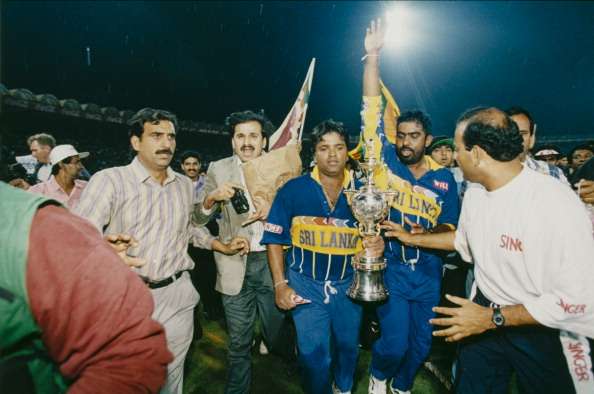Tim Wigmore is left incredulous at the lack of ambition as cricket plans to reduce its global reach
Those sad that the Rugby World Cup is in its dying embers might be grateful to know that it is only four years until England next hosts a major World Cup: the 2019 Cricket World Cup. The bad news is that cricket’s showpiece event will be a smaller and less enriching event, as well as being even longer: 46 days to rugby’s 43.
The intoxicating spectacle of Japan’s victory over South Africa highlighted the continuing improvement in emerging nations of the Rugby World Cup. The average points gap between Tier One and Tier Two nations is comfortably the lowest of the five World Cups to include 20 teams. Little wonder that World Rugby is now considering expanding the event to 24 nations.
Cricket has a very different approach and is unique among global sports in contracting the size of its flagship event. The 2019 and 2023 World Cups have been reduced to ten teams, who will each play each other in a tedious 45-game round robin. A side could lose their first four and be eliminated, yet still have five group matches left to play.
The cricketing equivalent of Japan, who began the Rugby World Cup ranked 13th, will have no place, even though upsets have been considerably more common in the Cricket World Cup than the rugby event. Ireland have won five games against full members since 2007 – more, remember, than England; Kenya toppled three Test sides to reach the semi-final in 2003 and also defeated the West Indies in 1996; Bangladesh and Sri Lanka also beat full members in the World Cup prior to gaining Test status.
As Mahela Jayawardene put it: “If we hadn’t had that opportunity, we probably wouldn’t have been here.”
It is not only romance that will suffer from the ICC’s myopia. Even if sides go to the World Cup and get thrashed – something that has become rarer in cricket and rugby alike – World Cup participation is the surest way to inspire a new generation to take up the sport. In Ireland, participation in cricket has quadrupled since their first World Cup appearance eight years ago; rugby participation among children in Uruguay has risen by 25,000 in the last year.
Reaching the World Cup also drives extra funding to emerging nations. In rugby, Canada and the United States are prime examples: in the last decade, the proportion of their revenue that comes from World Rugby, rather than outside sources, has fallen from almost half to 10 per cent.
That is because their presence in the World Cup encourages the government to invest in the sport, and entices sponsors to back the team. Yet the contraction of the Cricket World Cup risks making even the 11th best side in the world almost invisible. Here is the perversity of the ICC’s stance: while encouraging associates to generate more of their own income, its decisions actively hamper them from doing so.
If they were so inclined, World Rugby provides the ICC with an easy template for how to organise a World Cup. As in rugby, the Cricket World Cup could feature 20 teams in four groups of five, but with a slight tweak to add greater spice to the group stages: the top team in each group could advance to the quarter-finals, while teams who came second and third played-off against each other to join them. In the 2015 Cricket World Cup, this would have resulted in second round knockout games between Sri Lanka and Zimbabwe, Bangladesh and Ireland, England and the West Indies and Afghanistan and Pakistan. The group stages would not meander as in 2015, when two groups of seven were used, but this format would also be pragmatic enough to satisfy TV companies.
Major nations would be virtually guaranteed five games, while the tournament would feature 11 knockout matches, which get considerably higher viewing figures than normal group games.
The World Cup is only the most obvious manifestation of the differences between the two sports. While the ICC claims that the World t20 is a more inclusive 16-team event, the two-tier format is really, as Ireland’s William Porterfield has said, a ten-team tournament with a pre-qualifier.
Contrasting attitudes to the Olympic Games are emblematic of how World Rugby is far more serious about expansionism than the ICC. Next year, Sevens will make its Olympic debut. The upshot has been a huge increase in government funding for emerging nations: in China the government now invests around $20 million a year on rugby as it eyes up winning a medal. Cricket could benefit similarly, but the ICC – especially Giles Clarke – has continually been unique among international sports in shunning interest from the IOC. News that the ICC will meet the IOC next month offers some hope, even if the suggestion that the ICC might propose indoor cricket, when T20 would be an ideal fit for the Games, suggests the commitment of its leading decision-makers to the Olympics is less than overwhelming. Even if cricket does belatedly make the Games, it cannot do so until at least 2024.
When cricket and rugby both hold their next World Cups in four years’ time, the countries the tournaments will be staged in will be revealing. World Rugby has awarded the 2019 World Cup to Japan, indicative of a sport zealously trying to grow. Meanwhile the 2019 Cricket World Cup will be in England. In and of itself the decision is understandable, but not when placed in context: every major ICC event between 2015 and 2023 will be held exclusively in Australia, England or India, and English fans will already have witnessed the 2013 and 2017 Champions Trophy tournaments. Especially salient is the contrast with 1999 when England last hosted the World Cup. While cricket in Ireland, the Netherlands and Scotland was nowhere near as advanced as today, all three hosted matches in the World Cup. None will do so in 2019 – even though a game between Ireland and Bangladesh, say, could have been an infinitely more exciting spectacle in Dublin or Belfast than England.
Of course, rugby is far from perfect. It retains an archaic distinction between Tier One and Tier Two nations, gives the eight foundation members more votes on the World Rugby council than every other country, and lacks promotion to its two annual showpiece events – the Six Nations and Rugby Championship. The World Cup schedule, too, often favours Tier One nations.
Yet the disregard cricket shows for expansionism is so appalling as to make World Rugby, which is simply paying heed to growing its sport and could do far more, look utopian by comparison.
The fault lies not with the employees of the ICC, who are zealous in their commitment to building “a bigger, better, global game”, but with those with the critical decision-making power: above all, the Big Three.
English fans should be ashamed that the ECB has been vehemently opposed to cricket in the Olympics, pushed for the World Cup to be contracted to ten teams and led the restructuring of the ICC last year which entitles the Big Three, who already earn by far the most through individual TV rights and sponsorship, to more ICC revenue than the other 102 members of the ICC combined.
The ICC have declared its ambition to be the “world’s favourite sport” by 2023. It is a laudable aim, but unless cricket’s governing elite changes then the sport won’t even be able to hold onto its current status.
This piece originally featured in The Cricket Paper on Friday October 23, 2015















